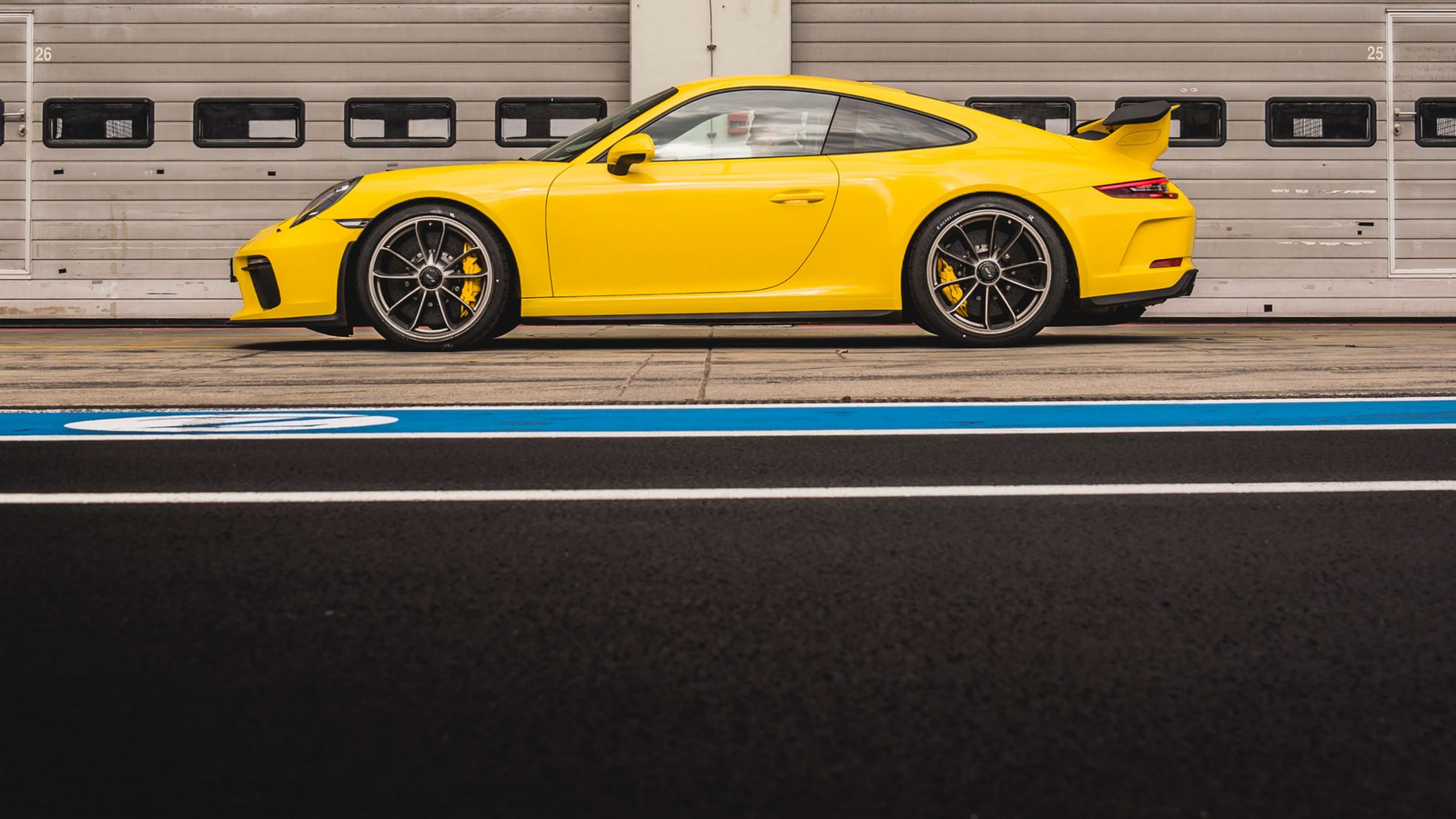“By achieving this time, we have emphatically proven that the new 911 GT3 not only provides the best driving experience, but can also deliver an impressive performance on the Nordschleife. The focus was on optimising the driving quality and adapting to the slight increase in engine power”, says a delighted Frank-Steffen Walliser, Vice President Motorsport and GT cars at Porsche. “A few years ago, lap times like this could only ever be achieved by thoroughbred racing cars with slick tyres”, adds Andreas Preuninger, Director GT Product Line. “The new GT3 can now achieve this with comparatively modest power, but is still fully suited to everyday use.”
The 911 GT3 also relies more on pure racing technology than the previous model. Its 368-kW (500-hp; 911 GT3: Fuel consumption combined 12.9–12.7 l/100 km; CO2 emissions 290–288 g/km), high-rev, naturally aspirated engine can also be found in the 911 GT3 Cup racing car. Equipped with rear-axle steering, a seven-speed Porsche Doppelkupplung (PDK) and Michelin Sport Cup 2 N1 tyres, the sports vehicle approached the starting line in the Eifel in its standard trim. At an air temperature of 8 degrees and an asphalt temperature of 14 degrees, the conditions for Porsche test driver Lars Kern were ideal for racing. The road-approved rear-wheel drive Coupé recorded its best time under notarial supervision. “If you can drive fast on the Nordschleife, you can drive fast anywhere in the world”, Frank-Steffen Walliser comments.
Consumption data
911 GT3: Fuel consumption combined 12.9–12.7 l/100 km; CO2 emissions 290–288 g/km



